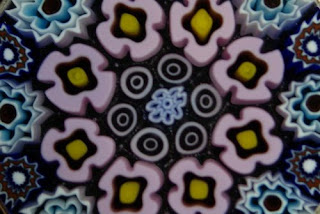
Murano glass has been a famous product of the Venetian island of Murano for centuries. Located off the shore of Venice, Italy, Murano was a commercial port as far back as the 7th century. By the 10th century it had become a well-known city of trade. Today Murano remains a destination for tourists and art and jewellery lovers alike.
It is believed that glassmaking in Murano originated from 9th century Rome, with significant Asian and Muslim influences, as Venice was a major trading port. Murano’s reputation as a centre for glassmaking was born when the Venetian Republic, fearing fire and destruction to the city’s mostly wooden buildings, ordered glassmakers to move their foundries to Murano in 1291. Murano glass is still interwoven with Venetian glass.
Murano's glassmakers were soon the island’s most prominent citizens. By the 14th century, glassmakers were allowed to wear swords, enjoyed immunity from prosecution by the Venetian state and found their daughters married into Venice’s most affluent families. However glassmakers were not allowed to leave the Republic. Many craftsmen took this risk and set up glass furnaces in surrounding cities and as far afield as England and the Netherlands.
By the end of the 16th century, three thousand of Murano island's seven thousand inhabitants were involved in some way in the glassmaking industry.
Today, Murano is home to a vast number of factories and a few individual artist studios making all manner of glass objects from mass marketed stemware to original sculpture. The Museo Vetrario or Glass Museum in the Palazzo Giustinian, which holds displays on the history of glassmaking as well as glass samples ranging from Egyptian times through the present day.

MoMo Tourism Board
MoMo Followers
MoMo Events
• 16/1 - End of ICT
• 18/1 - Start of IPT
• 21/1 - Jason's Farewell Dinner
• 02/2 - ReUnion Dinner
• 03/2 - CNY
• 15/2 - End of IPT
• xx/3 - Hokkaido Trip
Hokkaido Trip
• 30/4 - Bali Trip
Bali Trip
• 18/1 - Start of IPT
• 21/1 - Jason's Farewell Dinner
• 02/2 - ReUnion Dinner
• 03/2 - CNY
• 15/2 - End of IPT
• xx/3 -
 Hokkaido Trip
Hokkaido Trip• 30/4 -
 Bali Trip
Bali Trip
MoMo Citizen

- Christopher
- "The pessimist sees difficulty in every opportunity. The optimist sees the opportunity in every difficulty."
MoMo Adventure World Travel
 Jeju, South Korea Jeju, South Korea Seoul, South Korea Seoul, South Korea Incheon, South Korea Incheon, South Korea KangWonDo, South Korea KangWonDo, South Korea KyongSangBukDo, South Korea KyongSangBukDo, South Korea Johor, Malaysia Johor, Malaysia Desaru, Malaysia Desaru, Malaysia Kuala Lumpur, Malaysia Kuala Lumpur, Malaysia Penang, Malaysia Penang, Malaysia Malacca, Malaysia Malacca, Malaysia Langkawi, Malaysia Langkawi, Malaysia Butterworth, Malaysia Butterworth, Malaysia Cameron Highlands, Malaysia Cameron Highlands, Malaysia Genting, Malaysia Genting, Malaysia Klang, Malaysia Klang, Malaysia Port Dickson, Malaysia Port Dickson, Malaysia Ayer Hitam, Malaysia Ayer Hitam, Malaysia Batu Pahat, Malaysia Batu Pahat, Malaysia Phuket, Thailand Phuket, Thailand Pattaya, Thailand Pattaya, Thailand Bangkok, Thailand Bangkok, Thailand Krabi, Thailand Krabi, Thailand Chiang Mai, Thailand Chiang Mai, Thailand GuangZhou, China GuangZhou, China FoShan, China FoShan, China HeShan, China HeShan, China JiangMen, China JiangMen, China ZhongShan, China ZhongShan, China ZhuHai, China ZhuHai, China ChaoZhou, China ChaoZhou, China JieYang, China JieYang, China ShanTou, China ShanTou, China ShenZhen, China ShenZhen, China Hong Kong, China Hong Kong, China Macau, China Macau, China Taipei, Taiwan Taipei, Taiwan KeeLung, Taiwan KeeLung, Taiwan TaoYuan, Taiwan TaoYuan, Taiwan I-Lan, Taiwan I-Lan, Taiwan Guishan Island, Taiwan Guishan Island, Taiwan Singapore, Singapore Singapore, Singapore Pulau Tekong, Singapore Pulau Tekong, Singapore Pulau Ubin, Singapore Pulau Ubin, Singapore Sentosa, Singapore Sentosa, Singapore |
 Melbourne, Australia Melbourne, Australia Yarra Glen, Australia Yarra Glen, Australia Churchill Island, Australia Churchill Island, Australia Phillip Island, Australia Phillip Island, Australia Geelong, Australia Geelong, Australia Torquay, Australia Torquay, Australia Lorne, Australia Lorne, Australia Apollo Bay, Australia Apollo Bay, Australia Cape Otway, Australia Cape Otway, Australia Princetown, Australia Princetown, Australia Port Campbell, Australia Port Campbell, Australia Warrnambool, Australia Warrnambool, Australia Halls Gap, Australia Halls Gap, Australia Ararat, Australia Ararat, Australia Beaufort, Australia Beaufort, Australia Ballarat, Australia Ballarat, Australia Bintan, Indonesia Bintan, Indonesia Batam, Indonesia Batam, Indonesia Osaka, Japan Osaka, Japan Honolulu, United States Honolulu, United States Hawaii, United States Hawaii, United States San Francisco, United States San Francisco, United States Las Vegas, United States Las Vegas, United States Los Angeles, United States Los Angeles, United States San Diego, United States San Diego, United States Ho Chi Minh City, Vietnam Ho Chi Minh City, Vietnam Hanoi, Vietnam Hanoi, Vietnam Halong, Vietnam Halong, Vietnam Rome, Italy Rome, Italy Vatican City, Italy Vatican City, Italy Naples, Italy Naples, Italy Capri, Italy Capri, Italy Assisi, Italy Assisi, Italy Florence, Italy Florence, Italy Pisa, Italy Pisa, Italy Venice, Italy Venice, Italy Padua, Italy Padua, Italy Stresa, Italy Stresa, Italy Milan, Italy Milan, Italy Dubai, United Arab Emirates Dubai, United Arab Emirates |
MoMo Marketplace
If you are interested in the items below, please visit the Momo Marketplace for more detail & picture.
• MoGo BT Mouse (PCMCIA) • Yitoa PMP-400A1 HDD Player • Medion Foot Massager • V3 BTH8 Bluetooth • SonyEricsson K700i (x2) • SonyEricsson W910i • ONPOW Stainless Steel LED Switches • Belkin TuneCast3 FM Transmitter • Gadmei Gamebox TV Tuner • Pioneer DEH-3850MPH Car Audio • Amconics RM10A 8GB MP3 Player • LE MON Speaker Cube • USB Digital TV Receiver • Digital Door Viewer Set • Lapmate LapTunez Bluetooth Speaker • Table Top Fountains • Cisco Media Hub NMH305 • Belkin N1 Vision Wireless Router •
• MoGo BT Mouse (PCMCIA) • Yitoa PMP-400A1 HDD Player • Medion Foot Massager • V3 BTH8 Bluetooth • SonyEricsson K700i (x2) • SonyEricsson W910i • ONPOW Stainless Steel LED Switches • Belkin TuneCast3 FM Transmitter • Gadmei Gamebox TV Tuner • Pioneer DEH-3850MPH Car Audio • Amconics RM10A 8GB MP3 Player • LE MON Speaker Cube • USB Digital TV Receiver • Digital Door Viewer Set • Lapmate LapTunez Bluetooth Speaker • Table Top Fountains • Cisco Media Hub NMH305 • Belkin N1 Vision Wireless Router •
MoMo Current Playlist
• Akcent - That's My Name
• Duffy - Well Well Well
• Edward Maya & Vika Jigulina - Stereo Love
• Edward Maya ft Vika Jigulina-This is my life
• Eric Prydz - Pjanoo
• Katy Perry - Firework
• Mike Posner - Please Don't Go
• Sheikh Haikel - BK Still Steady
• Spiller - Groovejet (If This Ain't Love)
• Tropical paradise - Levi gonzalez
• Adam Lambert - Whataya Want From Me
• BOB - Airplanes
• Eminem - Love The Way You Lie
• Lady Gaga - Alejandro
• Maroon 5 - Misery
• Nicki Minaj - Your Love
• Olivia Ong - The Girl From Ipanema
• Olivia Ong - Lost In Emotion & Stand By Me
• Olivia Ong - Killing Me Softly With His Song
• Train - Hey, Soul Sister
• Travie McCoy - Billionaire
• China Dolls - Tom Yum
• Ivan Eclipse - Pre ZoukOut 2010 Mix
• Ivan Eclipse - Tease NYE Mini Mix
• Duffy - Well Well Well
• Edward Maya & Vika Jigulina - Stereo Love
• Edward Maya ft Vika Jigulina-This is my life
• Eric Prydz - Pjanoo
• Katy Perry - Firework
• Mike Posner - Please Don't Go
• Sheikh Haikel - BK Still Steady
• Spiller - Groovejet (If This Ain't Love)
• Tropical paradise - Levi gonzalez
• Adam Lambert - Whataya Want From Me
• BOB - Airplanes
• Eminem - Love The Way You Lie
• Lady Gaga - Alejandro
• Maroon 5 - Misery
• Nicki Minaj - Your Love
• Olivia Ong - The Girl From Ipanema
• Olivia Ong - Lost In Emotion & Stand By Me
• Olivia Ong - Killing Me Softly With His Song
• Train - Hey, Soul Sister
• Travie McCoy - Billionaire
• China Dolls - Tom Yum
• Ivan Eclipse - Pre ZoukOut 2010 Mix
• Ivan Eclipse - Tease NYE Mini Mix
MomoPost is Best Viewed in 1280x768

2 Comments:
We have loads of authentic italian Murano glass jewellery over at http://www.italian-world.com/murano/murano-16-b.html
It's a new site, it would be good if you can leave us any comments or suggestions.
Great.. Will check it out when I'm free.
Post a Comment